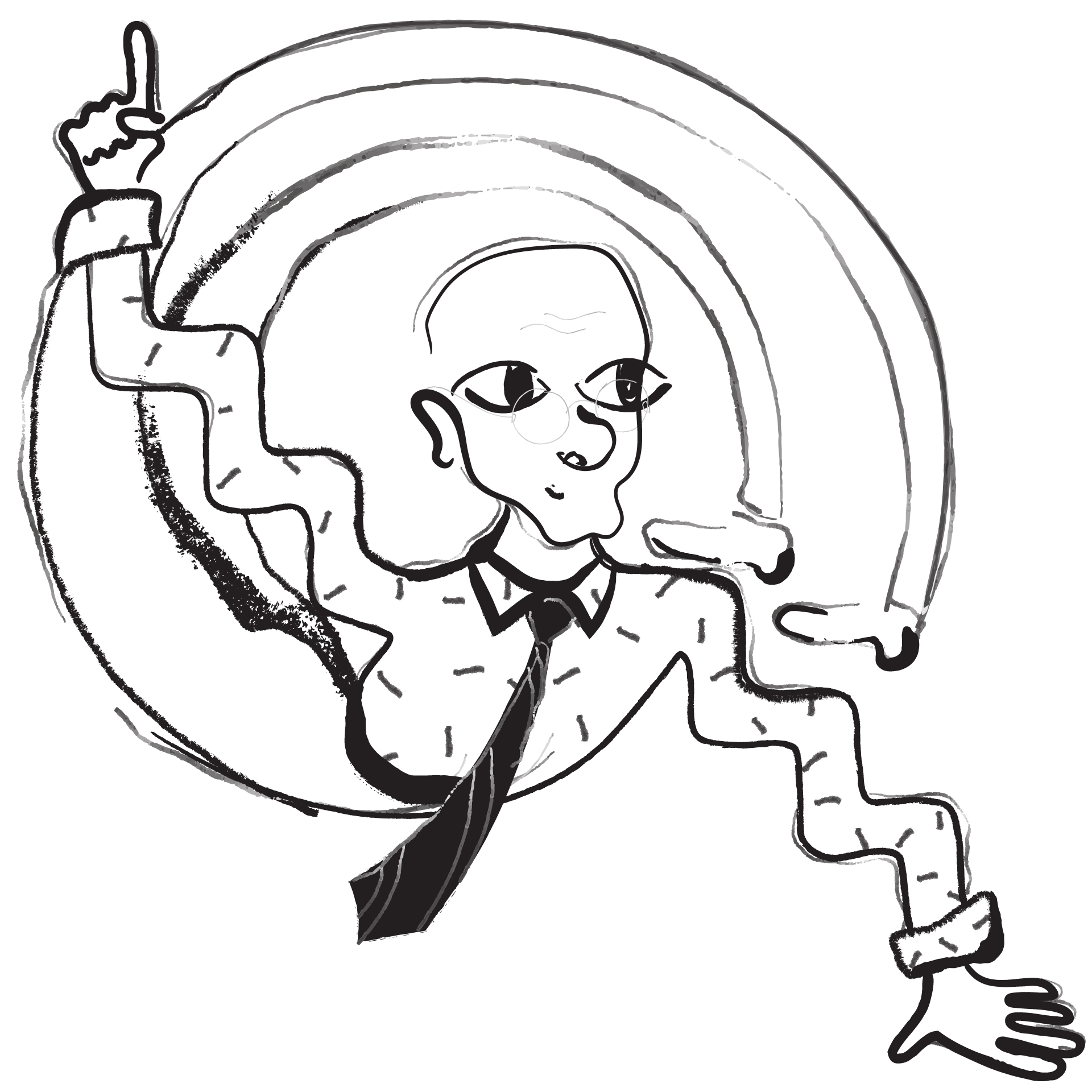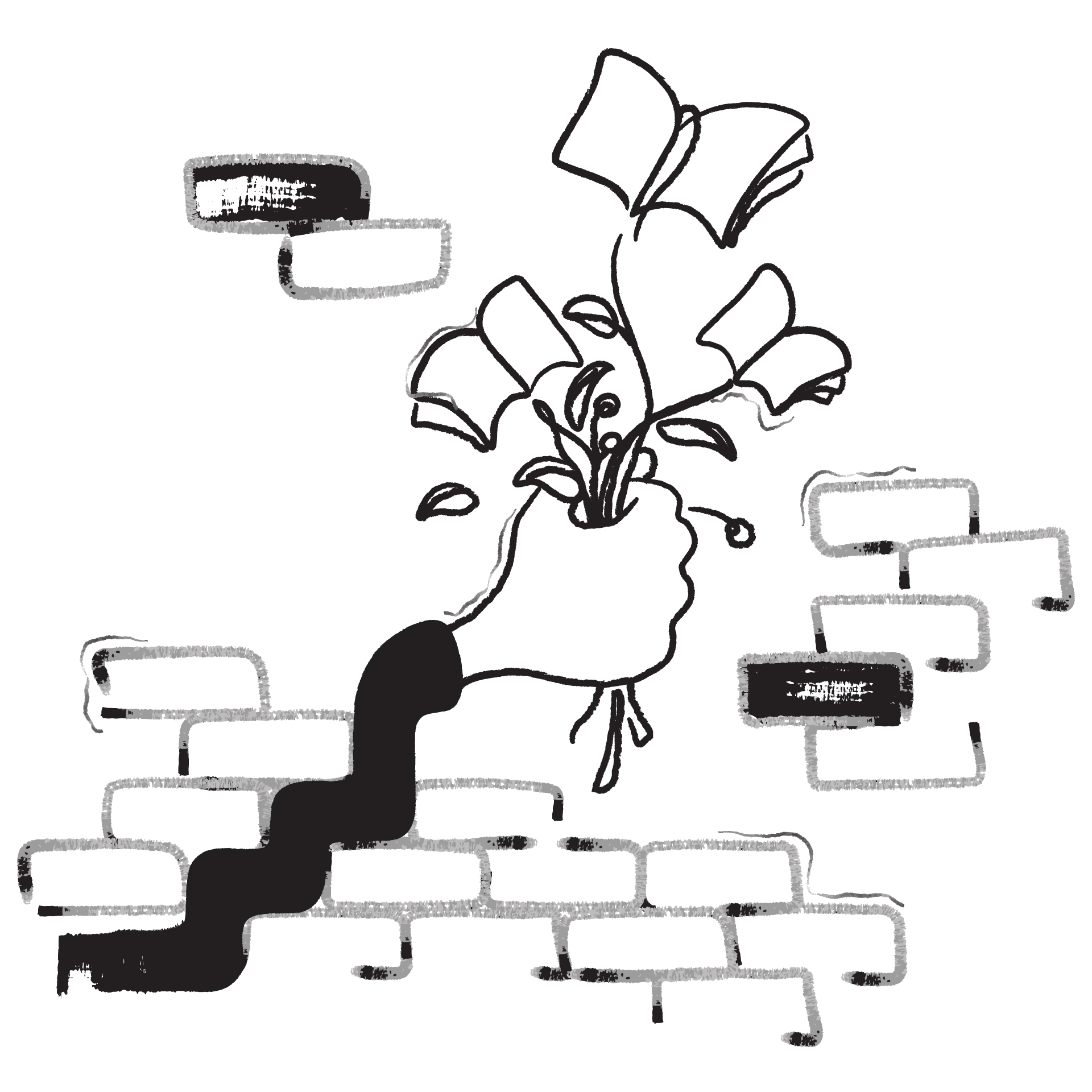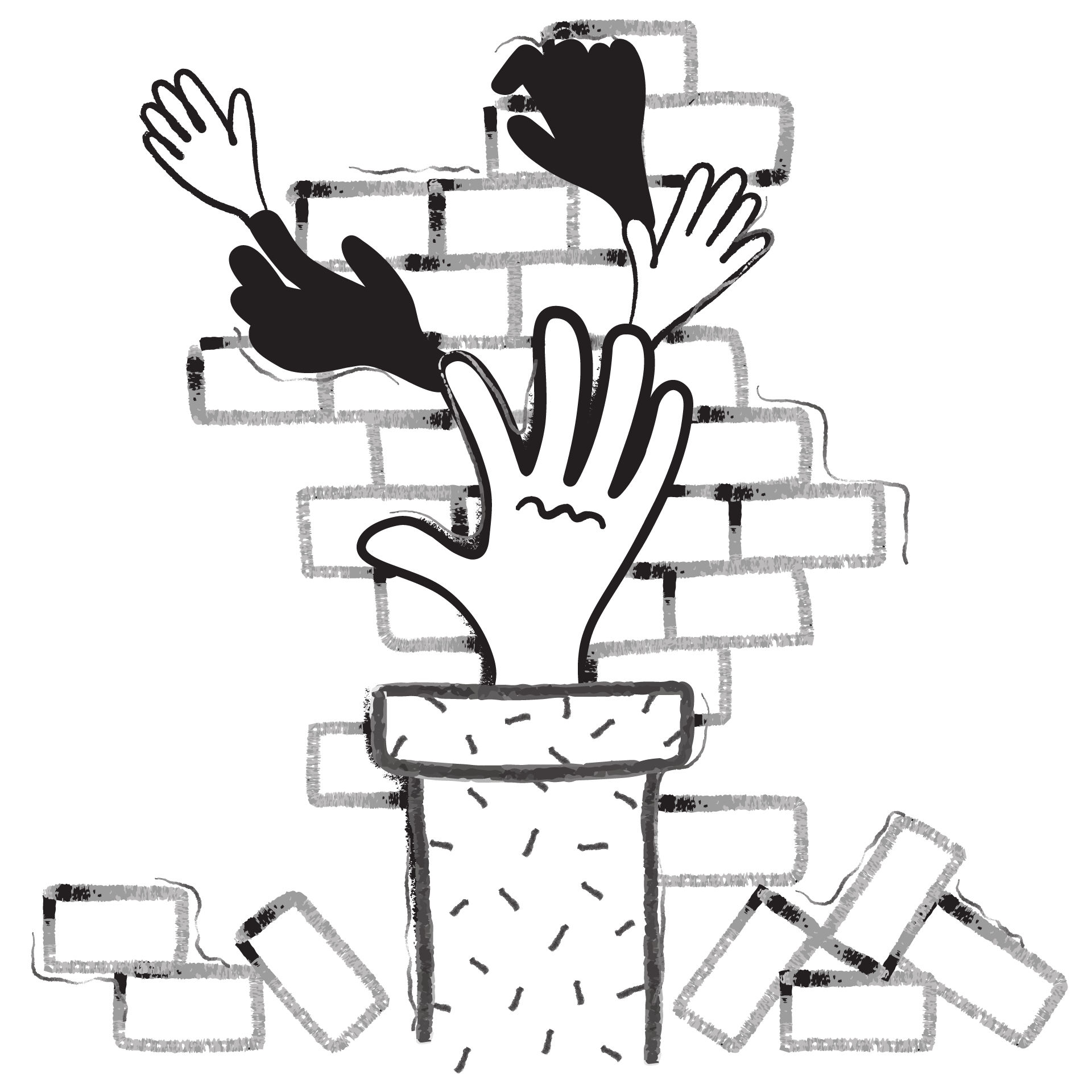Defining success for an engineering team
Looking back at the two years that made us challenge our engineering habits.
In the coming weeks my team at iAdvize will be making public the first step towards a complete overhaul of one of the company’s key products. Like most strategic parts of a 10 year old software suite, this app has had its fair share of stories to tell.
Those stories could be of the scary kind. They were legacy. As the engineering team working on its codebase, we were not confident that we had what it takes to deliver evolutions (or basic maintenance). It is a classic software engineering issue.
We reached this conclusion two years ago. We have since managed nevertheless to deliver new features, improve old ones and map a new path that let us overhaul the app significantly. Did we do this following a carefully crafted plan? Not really, not at first. But since we might have to do it again, let’s go ahead and document what made it work.
Let us show you how we learnt to fight against uncertainty with tools and methods, how we cultivated certainty by writing things down, by reasoning in “first principles”, by building architectural, technical and human leverage focused on the long-term. Let us show you how we became a Product team and why it worked. Let’s reverse-engineer this success.

Two years ago, in a galaxy far far away
The story starts around an old and complex iAdvize frontend application. It was not really abandoned, but it was not really under control either.
It was the Big Legacy App™.
Teams were scared of it. Some of its features were built when we were still maturing as engineers, unsure of how we should build our stack. Some had to be shipped fast and single-handedly by developers now long gone. Few of the current devs in our team had first-hand experience with the code.
Its UX was poor partly because its developer experience was bad. There were bugs and performance or accessibility issues. Maintaining the codebase and solving these issues was difficult: it was a mix of spaghetti code here and there, a strange soup of paradigms and libraries, of bad naming and no real separation of concern.
It left everyone frustrated. Developers had to apply patches for obscure bugs or add new features precariously relying on dodgy code while the product team didn’t really understand why everything took so much time with this app.
Something had to be done. Nearly two years ago, management decided to form a new team dedicated to the Big Legacy App. At first, two front-end developers rallied around one product manager. Two more developers have joined in since then.
The mission was obvious, we needed to deliver a product that serves its users well and that can meet their evolving needs without friction, a product that could grow with new business requirements alongside the rest of the iAdvize solution. An obvious mission does not make it an easy one. Soon we realised we had to change our approach. We needed an engineering strategy.

Not everything is uncertain in the world
Let’s face it: as software engineers it is easy to work on autopilot on such a codebase. Patching bugs after bugs, adding features on top of legacy features. “Ship ship ship!” and voilà, job done.
Like many, we were used to this autopilot mode but we started seeing it as a dangerous mindset. Unlike some, we decided it is not the nominal condition of software engineering. We refused to see ourselves as mercenaries.
Autopilot is an approach rooted in the present. It assumes the future is uncertain and the past not worth digging up. But is it true? It kept putting us in a “not worse, not better” situation. Maybe we could succeed at not making the codebase worse, but we could not make it better along the way. We were preserving an uncomfortable status quo.
Is it so unrealistic to plan for the big picture? To specify how things should combine and work together? We wanted to change our mindset.
The turning point for us has been realizing that changing things does not mean that everything has to be thrown away, even in this scary Big Legacy App. We found that some things do not change often: our core business, the features we provide, the APIs we use, the data we manipulate, the UI we have to implement, etc. It is the product’s vision and its value. Once isolated from the uneasy fog of the legacy, it becomes solid ground. It is a rich soil to cultivate on.
In other words, we saw two kinds of things in this codebase: the uncertain things that must be fought and the certain things that must be cared for.
The uncertain things that must be fought
The bugs, the spaghetti code, the unpredicatble module left by a long gone engineer, the undocumented black box, the 4-year old fork of a famous library to fix a bug in a hurry, etc.
We have to fight them intelligently. That is the part we must identify and eventually remove.
The certain things that must be cared for
The business rules and their edge cases, the workflows, the API calls, the data we use. The well documented and reliable external library. The software architecture books that inspire us.
The knowledge of this capital can be lost, spread out in the codebase or forgotten because some developers have left. Its usefulness however is always obvious and it is therefore often rediscovered on the go.
Such certainty has to be handled with care: it is what is precious about the product and the team that builds it. It should be curated, organised and documented so it can endure.

Fighting the uncertainty
There are two levels of uncertainty. The first one is the codebase itself and its behavior. Code that is hard to read, buggy features, undocumented or hard-to-understand librairies or APIs. That is the easy part… of the hard part.
The second one is more tricky. It is the uncertainty in ourselves. It is what happens when we are tired and forget about some edge cases. It is when we have to accomodate with colleagues with different mindsets or motivations or when we are simply wrong in our assumptions or lacking some key concepts.
Uncertainty can be created on purpose or accidentally when a team is mismanaged. One can undermine a team’s attempt at focusing on the product rather than the project, citing a need for immediacy or arguing that there could be such a thing as “too much quality”.
To fight these uncertainties we progressively added specific tools and methods.
We committed to not write Javascript anymore by switching to Typescript, strongly tied with a functional programming approach (with fp-ts). This helps manage the intrinsic uncertainty of the language itself and the data we manipulate. We now try to leverage our new language / paradigm combo to write the most robust code we can. We wrote an article, how we model our entities with opaque and sum types in Typescript, that gives an example of just that.
We also invested in a good darklaunch tool and decided to always use it to deploy new big features. This helps manage our partial understanding of the business rules and client usage of our product and balance this uncertainty with the need of shipping new features. The progressive rollouts and the impact they had on the codebase (isolation of the old code, atomic deploys) allowed us to gain confidence and velocity. We wrote a full article on this as well.
Sometimes, something new has to be implemented: a new low-level tool, a complete revision of a complex component or a brand new UI for example. It is impossible to produce a great solution instantly so we have regularly benchmarked external libraries, user-tested things or built Proof Of Concepts (POCs).
UI POCs happened to be extremely useful for us when working in pair with our designer on a complete interface revamp. Static mock-ups were not enough: we had to find a way to validate the relevance of the new UI in the browser, assessing its technical feasibility before jumping on the hard and long work of implementing it in our still-legacy codebase. Think of this as lifting the fog over a perilous valley before marching on.
Our approach to testing also completely changed. Two years ago our mantra was “unit-test all the things”, from the Redux action type to the most complex function. This was a doomed endeavour from the start, given our situation.
As a team with scarce resources in both time and devs, we have to choose carefully what we do. Having switched languages and paradigm helped us drastically reduce the number of unit-tests needed without compromising on the quality of our work. We switched to visual snapshots when appropriate and end-to-end testing that are in certain situations way more relevant.

Cultivating the certainty
The problem with certainty is how easily it leads to overconfidence. You’re really confident about this new project the PM has presented and you think you’ve understood all the constraints of a library by reading its README. Then the moment you have to write code for this project in your app, you discover a new level of complexity. This happened a lot with our legacy app.
Then there is the time factor. As time goes, certainty about things can decrease quickly. It is what happens when people come and go with their knowledge of the business rules. Not only people, but code obviously changes over time. Combine the two, and you get that feeling we feel coming back from a long vacation and we can’t fully understand our code anymore. Certainty should be cultivated with care.
To do just this we introduced a new method: we started to plan seriously before we do. We don’t want to discover something fundamental at the 90% build milestone on a project anymore. We used to only give some clues on how to implement things in Jira tickets. Now we dedicate 30% to 50% of the project time writing thorough specs (see also Google Design Docs as inspiration). This helps a lot in creating strong certainty about what we are doing. No more last-minute surprise that challenges a whole project. And when you come back from your hard-earned vacation, you have ample documentation to remind you what’s what.
This pattern soon became central to our team. We now write things down. We write specs, as we’ve seen, but we don’t stop at them. We use ADRs or RFCs to keep track of decisions. We try to write business knowledge directly as code (we call this part of the codebase the domain). We write APIs contracts with parsers like io-ts.
The goal is not to set things in stone but to extract the knowledge from people’s brains. We want to refer to it and challenge it constructively in the long term. With this we can preserve and share the certainty we have on a subject for a long time.
Certainty is not just about our confidence in our codebase. It is also about our understanding of classic computer science subjects and our knowledge of the frontend ecosystem. It is a little bit about not trusting our weak human brains as well. Unconsciously, we regularly “borrowed” certainty from others by reading articles, books, watching conferences, trying new languages. It is not so much about introducing new tools in our codebase as it is about learning new concepts that will inspire us and help us reason from first principles.

Building leverage
We recently understood that our process can be summarized as trying to work in Product-mode as opposed to Project-mode. Our goal has been to consolidate a durable team around our specific product. We think it’s a powerful mindset to take back control of a legacy codebase such as ours. It creates actionable knowledge and the right dynamic to motivate people.
Once we got the hang of having a long term mindset we understood that everything is about leverage: investing strategically in things that will “maximize the output of our work” in the long term.
There is architecture leverage. The team needs a mental framework to put things in the right place in the codebase, handle uncertainty properly and dissect new projects correctly.
We now use Domain Driven Design for that. It is our structural framework, helping us handle the legacy code and the external actors around the app. All our specs are now written through the prism of the infrastructure / application / domain / view layers.
There is also technical leverage. We invested time in automation (great CI and continuous deployment with end-to-end tests embedded), in the Typescript / functional programming approach that kind of automates part of the work we would manually do writing standard Javascript. We also set-up bots that rebase and merge Pull Requests automatically or alert us of production errors or deployments.

Last but not least, there is human leverage. Since we are a small team we don’t feel the need for formal processes but there are nevertheless key takeaways.
We are lucky to have a diversity of frontend developers in the team, in both skills and experiences. Some are UI and design systems experts, some are more into codebase architecture. Some are really invested in leveraging Typescript while others are more into agile processes and team building. Some of us are juniors fresh from school, others are seniors with multiple past experiences. Thanks to this diversity everyone has something to learn and we challenge each other’s work constructively.
We also put attention in cultivating empathy for one another in our day to day interactions, like during code reviews. We are not robots.
And finally, we try not to make mountains out of molehills but to focus and celebrate things that matter instead. We’ve been confined and separated from each other because of COVID-19 for a few months now. Is it the end of the world? Probably not! The relationships we have formed inside our team are not about the superficiality of sharing the same open-space for 8 hours a day or drinking a beer every week with the rest of the company. It is about our common mission, about freely sharing our feelings on a project. It is promoting transparency, giving praise and celebrating team milestones together even remotely.
Now that our Product mode team is formed and sticks to an engineering strategy, projects are seen as opportunities, small steps towards the technical vision, even if we have to sometimes “hack” the roadmap the management wants us to follow. Projects are not isolated periods of time decoralated from previous and future work, they are part of the journey.
This pragmatic mindset doesn’t prevent the team from doing the easy things early, but we plan for the hard things even earlier. Thanks to that, everything is seen through a solid technical vision and we can actually move faster. Old parts are isolated correctly and are not obstacles for new code anymore.
When the time comes for us to rework a legacy part of the codebase, it is not so much about refactoring than it is about shipping a new version (with darklaunch, of course!) that will enable new usages or consolidate current ones. What would you do if you had a lousy, heavy bike with a rusted frame, no wheels and no brakes but were asked to run the Tour de France? You would assess your budget. If you find it more costly or inefficient to repair the broken bike than it would be to build a light and speedy new one, you would build a new one. We’re sure that PMs, managers and businesses understand this mindset.
And because everything is about the long term, patience is key. It is a marathon, not a sprint, and from time to time everyone must zoom out and remember the road ahead.
Where are we now?
This is the team’s vision:
- Fighting the uncertainty with tools and methods: languages and paradigms, deployments strategies, POCs, smart tests, …
- Cultivating certainty by shutting down the autopilot and dedicating time for thorough specs, writing all things down, and being curious about new concepts.
- Maturing as a Product-mode team that builds leverage by looking for the right mental framework to think about its codebase, investing in technology and people.
Is it to say that we’ve succeeded at all of this and we don’t have to be cautious about it anymore? No. It is a day to day fight against our tendency to see everything with a short term vision. It is tempting to work in Project-mode but we know deep inside that without a coherent engineering strategy it will be very pricey in the long run.
Of course we cannot design everything at once and once for all. Having an engineering strategy is not about that. It is more about collecting tools, concepts and methods, having “designed the way we design things” as Guy Steele explains, and leveraging all of that.
There is more to the software engineering job than producing code continuously. It is also about designing solutions, planning a strategy, mentoring people and building relationships: all of which help tremendously with the coding part.

This article has been written with the fantastic help of Benoit Rajalu.
Thanks also to the rest of the team — Victor Graffard and Nicolas Maligne — as to Fhenon De Urioste, Anthony Griffon, Pierre-Alexandre Gury, Nicolas Declercq, Wandrille Verlut and Arno Baudu for reading drafts of this.
Resources for inspiration
On software engineering in general:
- The Pragmatic Programmer: your journey to mastery, 2nd Edition by David Thomas, Andrew Hunt
- Staffeng.com and lethain.com by Will Larson
- Is High Quality Software Worth the Cost? by Martin Fowler and all martinfowler.com in general
- Hammock Driven Development by Rich Hickey
- Think in Math, Write in Code by Justin Meiners
- The Increment magazine from Stripe
On software architecture:
- Domain-Driven Design: Tackling Complexity in the Heart of Software by Eric Evans
- Rich Hickey with Design, Composition and Performance, Simple Made Easy
- Run Less Software by Rich Archbold
On tools and concepts:
- Giulio Canti for fp-ts, io-ts and others functional programming libraries
- The Mostly adequate guide to FP
- Rich Hickey again with Maybe Not, Are We There Yet?,
- Features Toggles by Pete Hodgson
On management and remote:
- The Basecamp crew for Rework, It Doesn’t Have to Be Crazy at Work and ShapeUp
- The Extraordinary Coach: How the Best Leaders Help Others Grow by John Zenger and Kathleen Stinnett
- It’s Not Enough to Be Right — You Also Have to Be Kind by Ryan Holiday
- Context over control: the future of remote work by Leonardo Federico
Illustrations by absurd.design